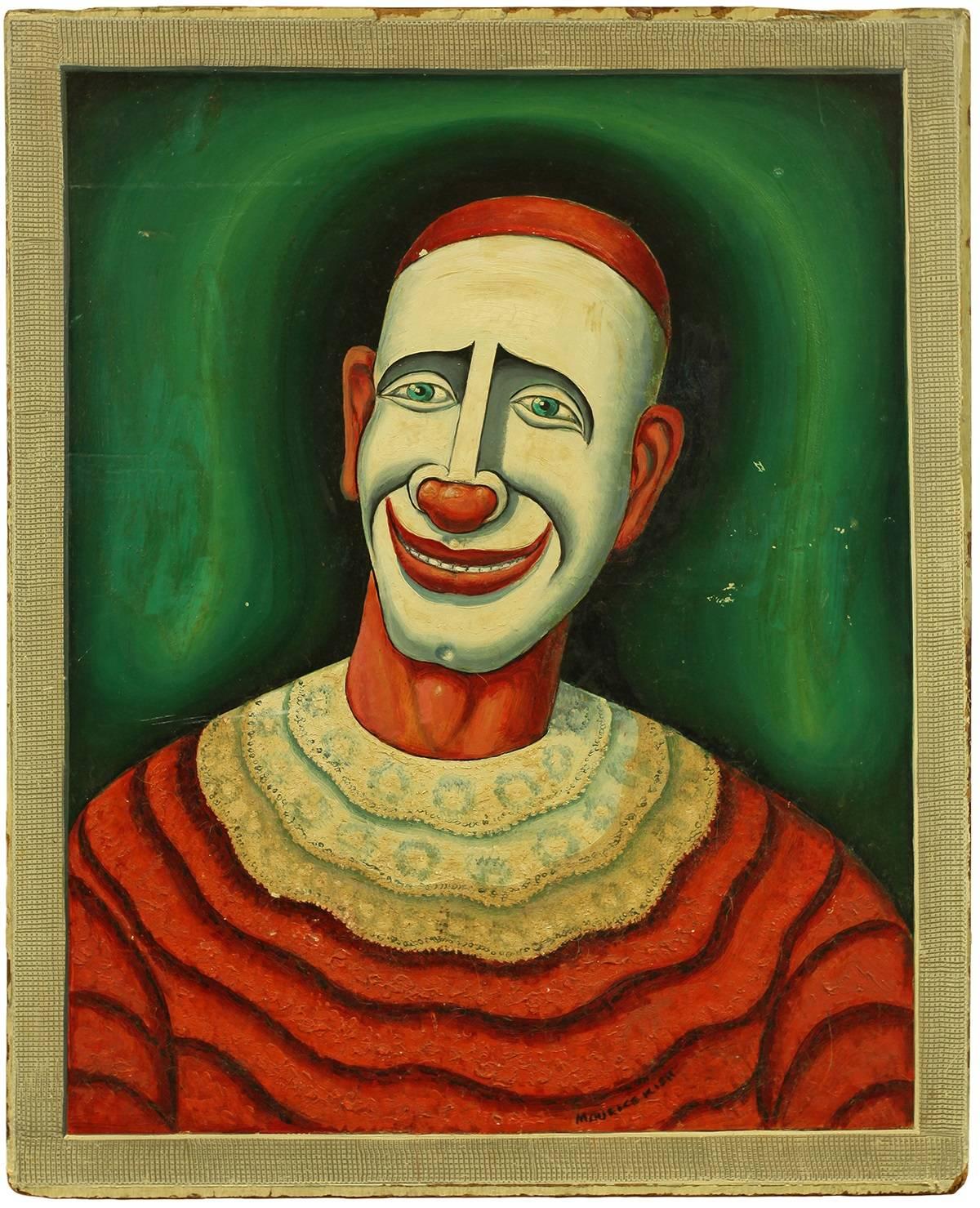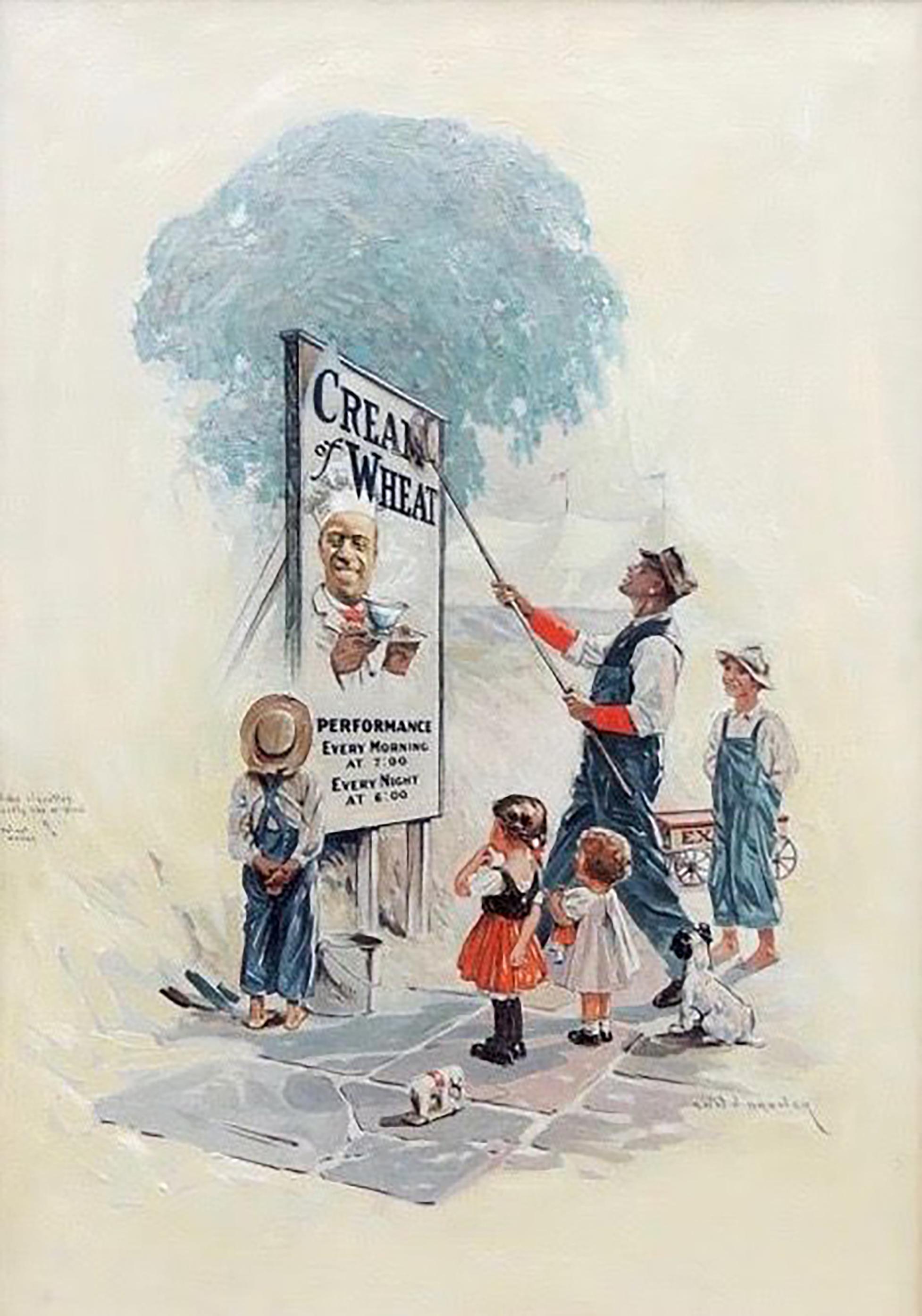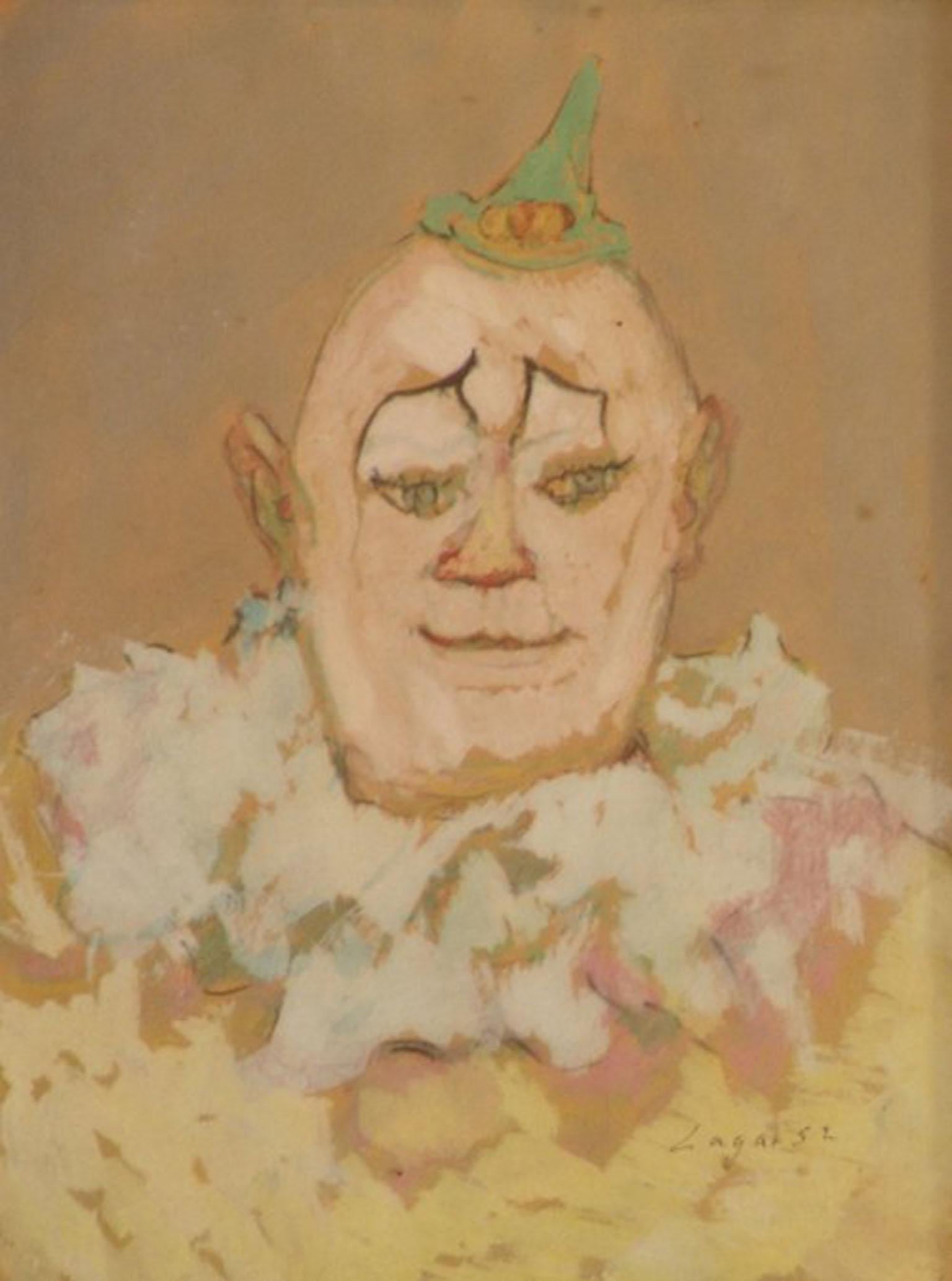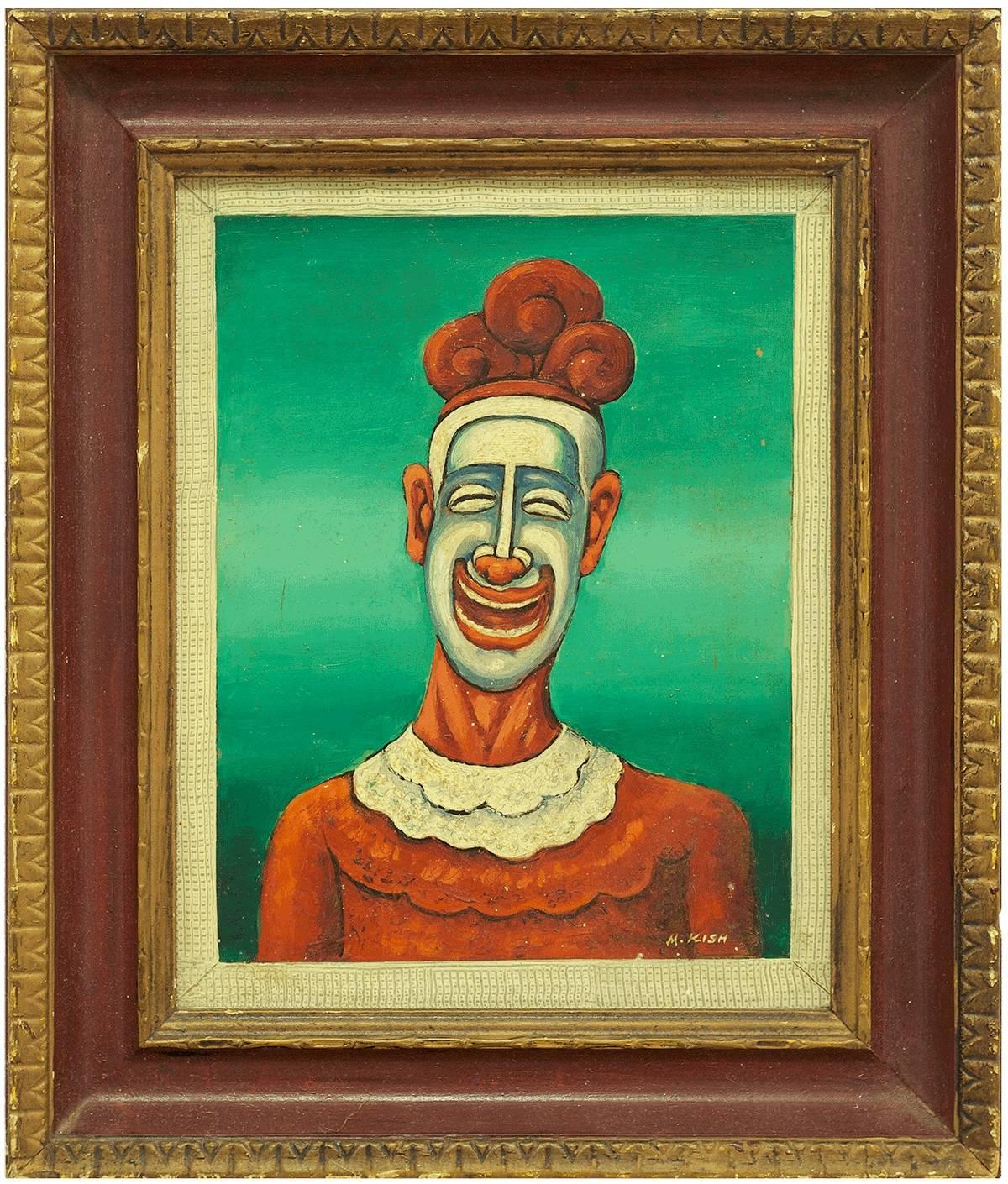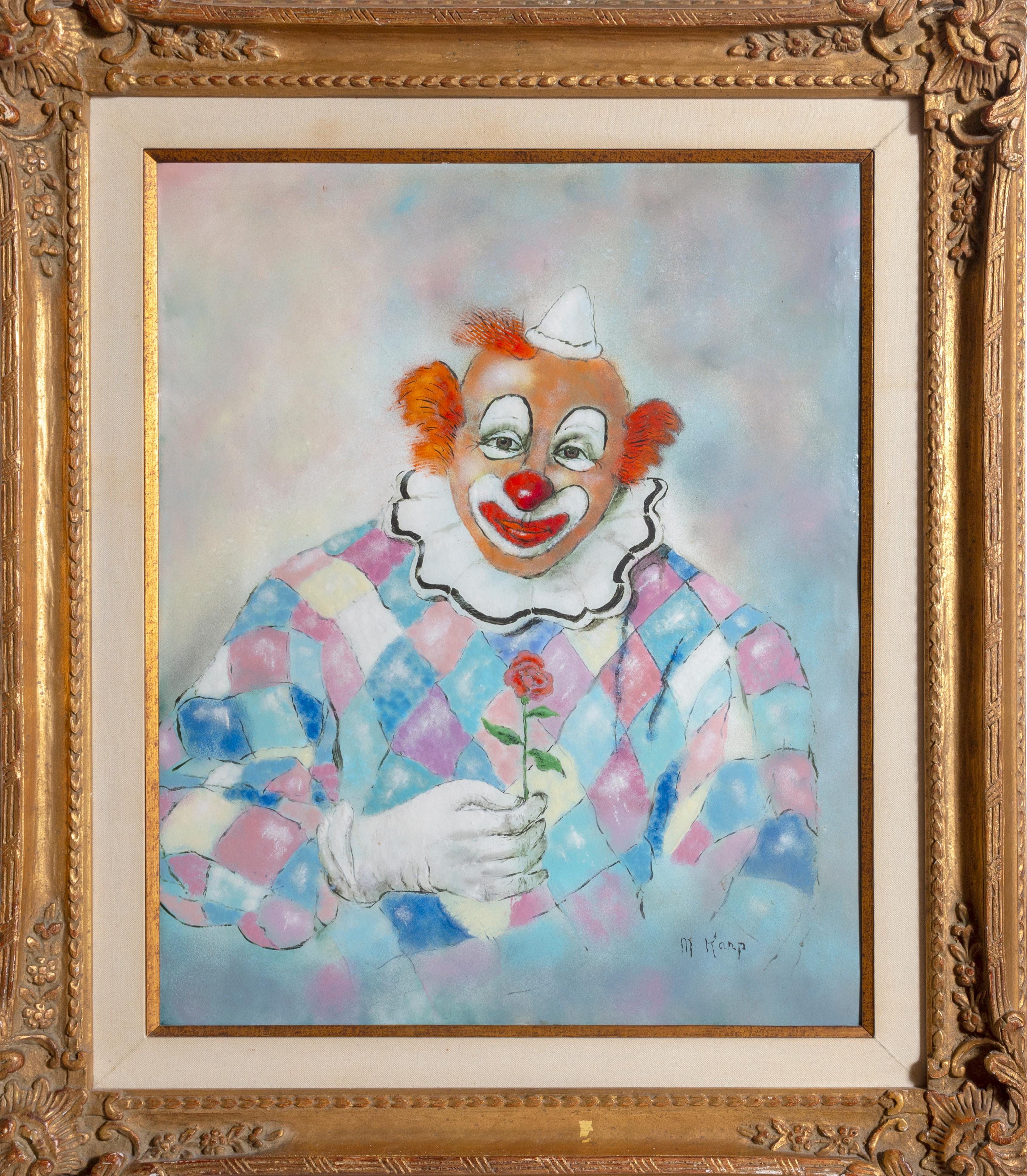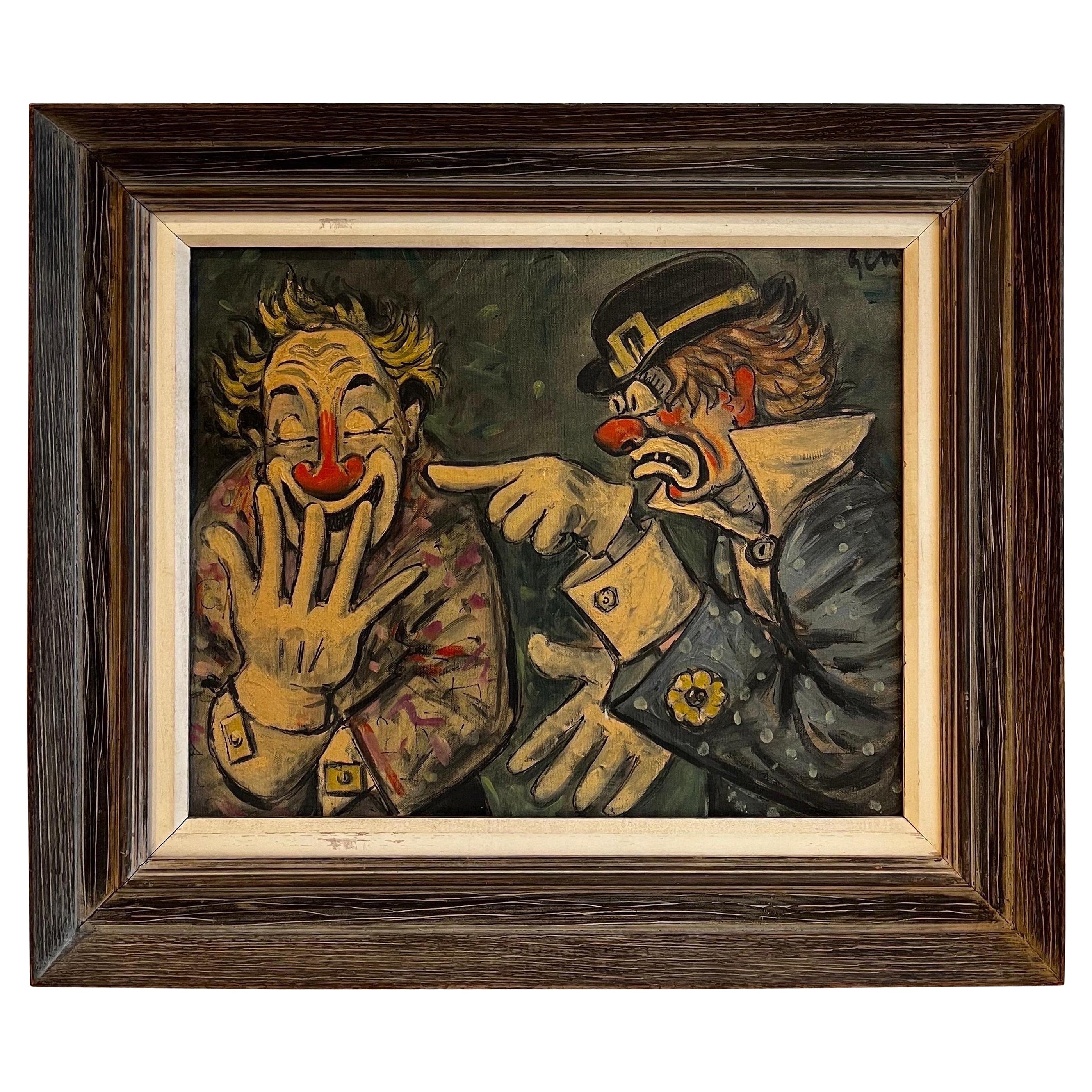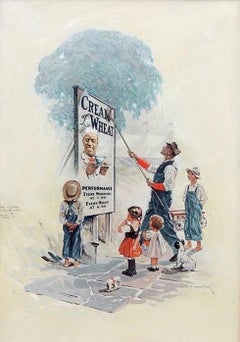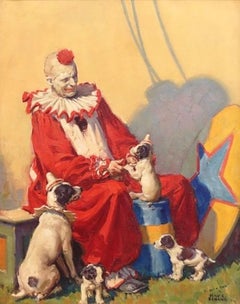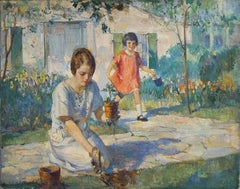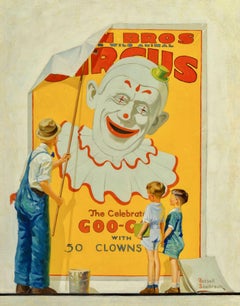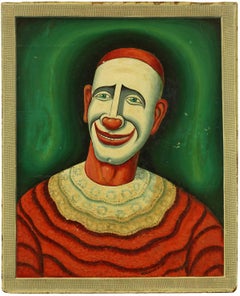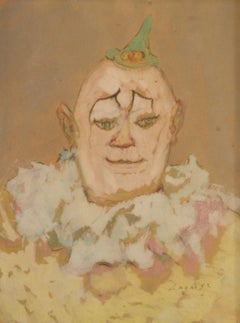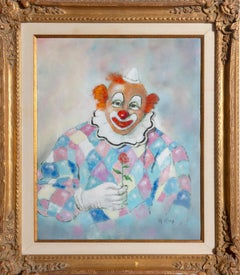Items Similar to The Jolly Jester and his Vegetable Dolls, Original Cream of Wheat Advertisement
Want more images or videos?
Request additional images or videos from the seller
1 of 6
Haddon Hubbard SundblomThe Jolly Jester and his Vegetable Dolls, Original Cream of Wheat Advertisement1928
1928
$54,000
£41,120.97
€46,957.52
CA$75,876.67
A$83,251.16
CHF 43,852.71
MX$990,360.38
NOK 561,747.98
SEK 512,952.60
DKK 350,817.85
About the Item
This original advertisement for Cream of Wheat cereal features the “Jolly Jester,” one of several health clowns employed by the Child Health Organization of America as part of a national campaign to promote children’s health. J. Wallace Mackay, the man behind the Jolly Jester costume, presented himself as an authority on children’s food habits. Dressing as a clown and traveling to schools across the country, Mackay used vegetable dolls to bring a sense of playfulness to teaching children about healthy eating habits. Often making a theatrical entrance on a prancing hobby horse, Mackay would follow with a ventriloquial performance featuring vegetable dolls like Charlie Carrot and Minnie Spinach, along with other personified produce.
Published in prominent women’s magazines such as Good Housekeeping and The Ladies’ Home Journal in 1928, the printed advertisement directly addresses mothers. It underscores the importance of a nutritious breakfast, like Cream of Wheat, for children’s academic success. Mackay states, “Mothers can get wonderful results right at home if they’ll just make use of the child’s love of fun to establish sound habits,” including a daily hot cereal breakfast.
This large and colorful artwork is a prime example of Haddon Sundblom’s signature style. A highly sought-after illustrator, Sundblom was hired to create advertisements for top brands like Maxwell House, Palmolive, and Procter & Gamble. He is best known for creating the iconic figures of the Coca-Cola Santa, the Quaker Oats Quaker, and Aunt Jemima. In addition to advertisements, Sundblom created calendars and story illustrations for leading magazines.
- Creator:Haddon Hubbard Sundblom (1899 - 1976, American)
- Creation Year:1928
- Dimensions:Height: 26 in (66.04 cm)Width: 24 in (60.96 cm)
- Medium:
- Period:
- Condition:
- Gallery Location:Fort Washington, PA
- Reference Number:Seller: 6351stDibs: LU3843987013
About the Seller
5.0
Recognized Seller
These prestigious sellers are industry leaders and represent the highest echelon for item quality and design.
Established in 1995
1stDibs seller since 2016
140 sales on 1stDibs
Typical response time: 1 hour
- ShippingRetrieving quote...Shipping from: Fort Washington, PA
- Return Policy
More From This Seller
View All"Circus Day, " Cream of Wheat Advertisement, Saturday Evening Post, 1923
By Edward Vincent Brewer
Located in Fort Washington, PA
Signature: Signed Lower Right
"Circus Day", original Cream Of Wheat illustration. Artist applied face. Ex: Kraft Food Collection / Morton Grove Ill.. Reference: "The Nabisco Brands ...
Category
1920s Landscape Paintings
Materials
Oil
Circus Clown with Dogs, Cover for Country Gentleman, April 1929
Located in Fort Washington, PA
Medium: Oil on Canvas
Signature: Signed and inscribed LRC
Country Gentleman Cover illustration for April 1 1929. Gift to artist Harold Von Schmidt. Harold Von Schmidt (May 19, 1893 ...
Category
1920s Figurative Paintings
Materials
Canvas, Oil
Cream of Wheat Ad
By Haddon Hubbard Sundblom
Located in Fort Washington, PA
Medium: Oil on Canvas
Signature: Unsigned
"Energy To Meet The Languid Moods Of Spring" Cream of Wheat Ad
Category
1920s Figurative Paintings
Materials
Canvas, Oil
Capper's Farmer, 1935
By Russell Sambrook
Located in Fort Washington, PA
Medium: Oil on Canvas
Siganture: Signed Lower Right
Sight Size 31.75" x 24.75;" Framed 36.00" x 28.00"
Category
1930s Figurative Paintings
Materials
Canvas, Oil
Cream of Wheat Ad
By James Montgomery Flagg
Located in Fort Washington, PA
Signed Lower Left
Category
1910s Figurative Drawings and Watercolors
Materials
Watercolor, Board
Circus Dog, The Saturday Evening Post cover
By Joseph Christian Leyendecker
Located in Fort Washington, PA
Signed by artist lower right
The Saturday Evening Post cover, July 29, 1922
This commission for The Saturday Evening Post is a brill...
Category
1920s Figurative Paintings
Materials
Oil
You May Also Like
Clown, Early 20th Century Playful Oil Painting on Board
By Maurice Kish
Located in Surfside, FL
This portrait of a clown by Maurice Kish is part from a series of carnival figures, circus clowns and carousel horses and riders that he did in the 30s and 40s. The artist uses a vibrant color palette and controlled brushstrokes to depict the subject in a realistic way.
The imagery of Maurice Kish (1895-1987), whether factories or carousels, reliably subverts expectations. His vision hovers just around the unraveling edge of things, where what is solid and clear becomes ambiguous. He is fascinated, often delighted, by the falling apart. This unexpected, fresh perspective results in oddly affecting pictures of a now long-gone New York.
Born Moishe in a town called Dvinsk, Russia (what is now Daugavpils, Latvia), Kish came with his family to New York when he was in his teens. The family settled in Brownsville, and for the rest of Kish’s life Brooklyn remained his home, though he moved from one neighborhood to another. He was close to his parents, who recognized his talent and supported his desire to become an artist.
Kish attended the National Academy of Design as well as Cooper Union. His fellow students included many other immigrants and children of immigrants who were particularly receptive to the Modernism coming from Europe. As his career progressed, Kish himself applied different strains of Modernism to different purposes. For him, the story was held above all else.
For years, Kish used the skills he acquired in art school to earn his living at a Manhattan glass...
Category
Early 20th Century Modern Portrait Paintings
Materials
Oil, Board
"The Clown", 20th Century Gouache on Cardboard by Spanish Artist Celso Lagar
By Celso Lagar
Located in Madrid, ES
CELSO LAGAR
Spanish, 1891 - 1966
THE CLOWN
signed and dated "Lagar 52" (lower right)
gouache on cardboard
10-5/8 x 8 inches (27 x 20.5 cm.)
PROVENANCE
Private French Collector
Cel...
Category
1950s Fauvist Portrait Paintings
Materials
Gouache, Cardboard
The Clown Surrealist Oil Painting Maurice Kish WPA Artist American Modernist
By Maurice Kish
Located in Surfside, FL
The imagery of Maurice Kish (1895-1987), whether factories or carousels, reliably subverts expectations. His vision hovers just around the unraveling edge of things, where what is so...
Category
20th Century Modern Portrait Paintings
Materials
Oil, Board
Clown With Flower, Enamel Painting on Copper by Max Karp
By Max Karp
Located in Long Island City, NY
Artist: Max Karp
Title: Clown with Flower
Medium: Enamel on copper, signed lower right
Image Size: 29.5 x 23 inches
Frame Size: 40 x 34 inches
Category
Late 20th Century American Impressionist Figurative Paintings
Materials
Copper, Enamel
Expressive Clown Painting, signed, c. 1950
Located in Philadelphia, PA
Expressive clown painting - signed "Jen"
circa 1950 - great frame
Frame size = 22.5 x 26.5
Image size = 15.5 x 19.5.
Category
Mid-20th Century American Mid-Century Modern Paintings
Materials
Paint
$750 Sale Price
60% Off
The Jester, Impressionist Portrait, Signed Oil Painting
By Claude Benard
Located in Cirencester, Gloucestershire
The Jester, Impressionist Portrait, Signed Oil Painting
By French artist Claude Benard, (1926 - 2016)
Signed by the artist on the lower left hand corner
Oil...
Category
Mid-20th Century Impressionist Interior Paintings
Materials
Oil
